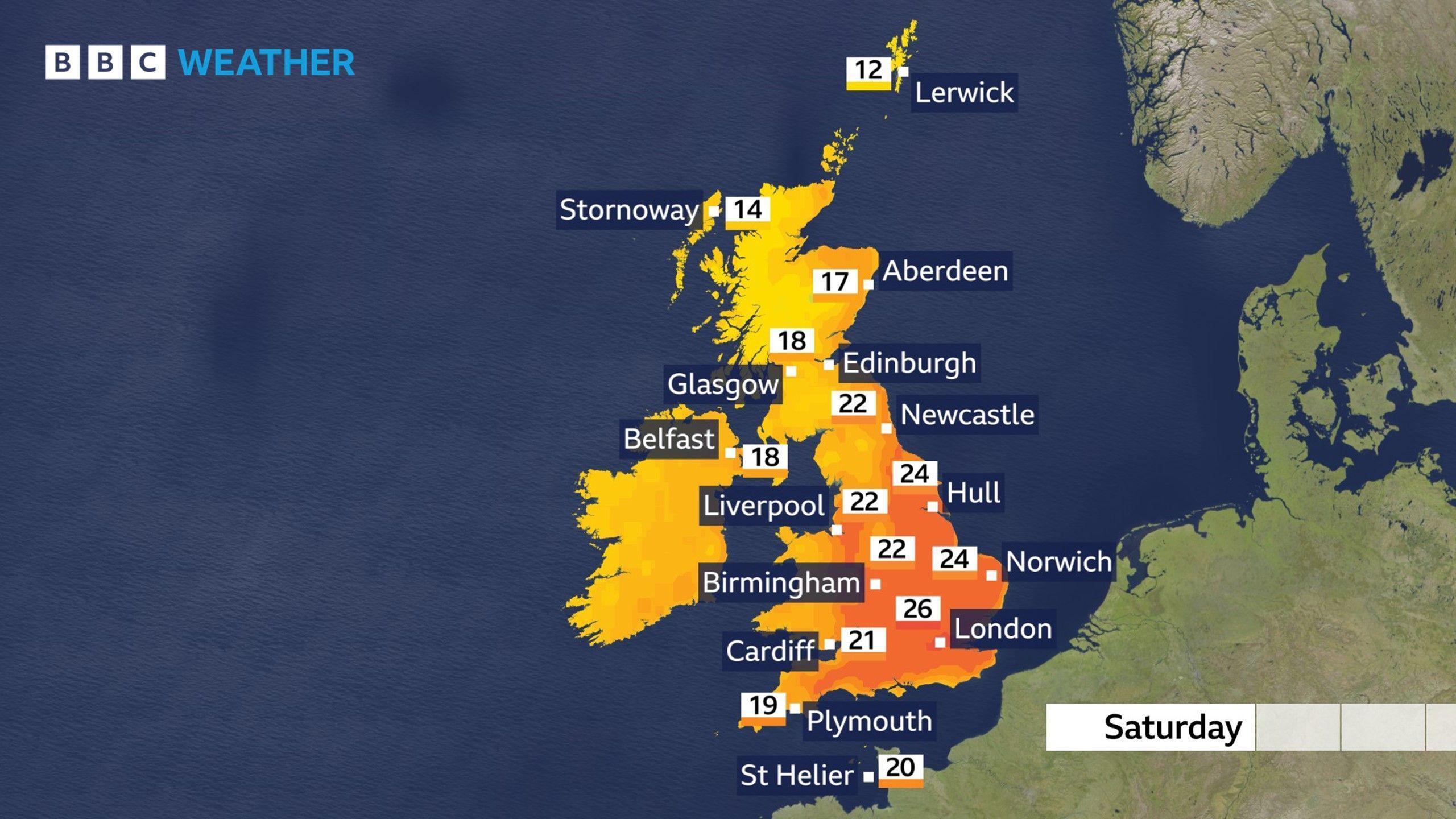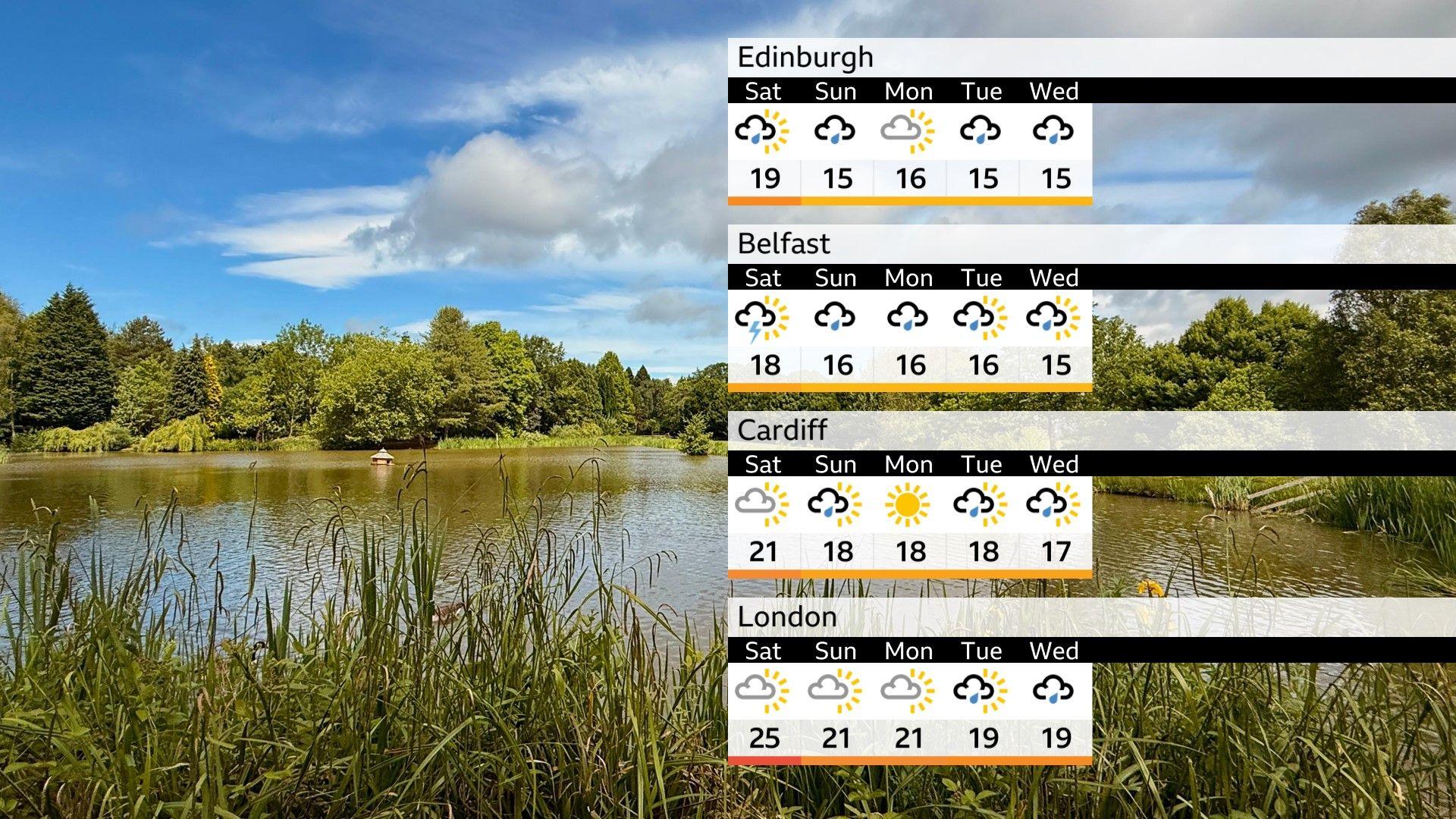Temperatures rise for last day of record breaking spring

Stav Danaos
Lead Weather Presenter
Sabitha Prasher
BBC Weather
Following some cooler and showery weather this week, temperatures are on the rise across England and eastern Wales to mark the end of May with a few locations expected to reach 26C (79F) on Saturday.
Spring has already been confirmed as the sunniest on record, with temperature and rainfall close to record breaking levels too.
Sunday 1 June marks the start of summer on the meteorological calendar.

Warmer for much of England and Wales into this weekend
Will it warm up everywhere?
Not all parts of the country will experience the warmth this weekend as high pressure will only influence conditions across parts of England and Wales.
Meanwhile, low pressure systems will continue further north – bringing showers or longer spells of rain to northern England, Scotland and Northern Ireland over the next few days, with maybe even an isolated thunderstorm.
Despite this, temperatures will remain slightly above average, and it will feel pleasant whenever the sun breaks through the shower clouds.

Warmth across the south will be short-lived with unsettled weather returning to all next week
Any sign of a June heatwave?
June is the first month of meteorological summer, so it is not unusual to have hot spells of weather. It’s all down to the position of the jet-stream and ultimately the pressure pattern set up.
Some computer models are hinting at a hotter spell unfolding towards the end of the first week of June, as we may import a plume hot air from the near continent.
However, it’s too early to say for certain.
The chance of a hot, and potentially humid spell of weather could also come with the risk of some bigger thunderstorms which can often bring a lot of rain in a short space of time for some.
UV and Pollen levels
The sun reaches the highest point in the sky and therefore its peak strength during June especially around the summer solstice. Whatever the temperature, it’s worth remembering that UV levels can still be high even on a cloudy June day.
Grass pollen also peaks in June, often making this a miserable time of year for hay fever sufferers. The pollen count tends be lower in cooler and showery weather conditions, so the lack of high temperatures and wall-to-wall sunshine could be a welcome relief to many.
Don’t forget that you can check UV and pollen levels as part of your local forecast on the BBC Weather App.







